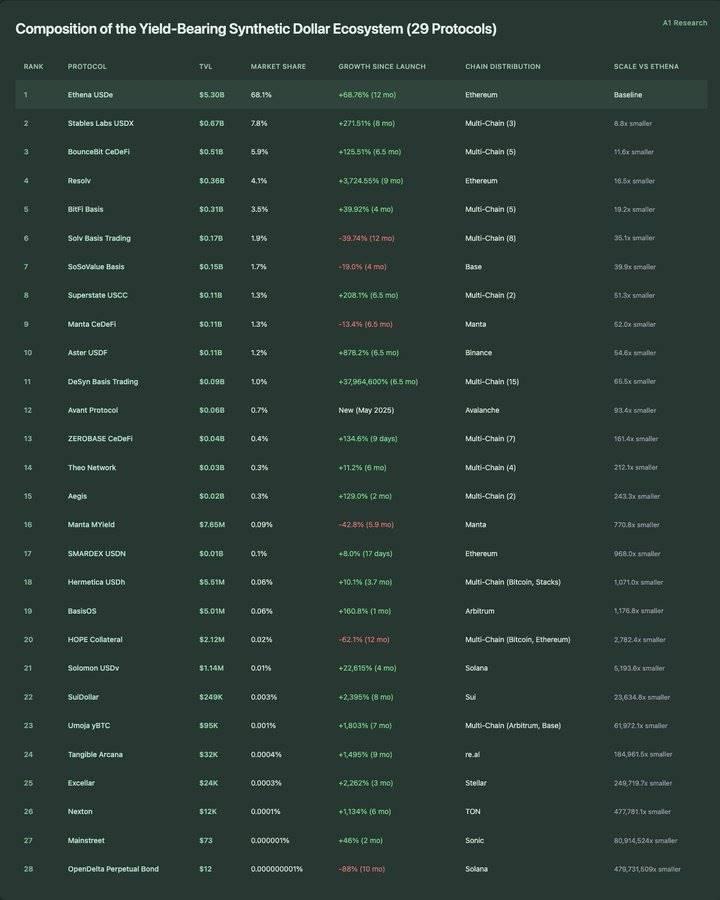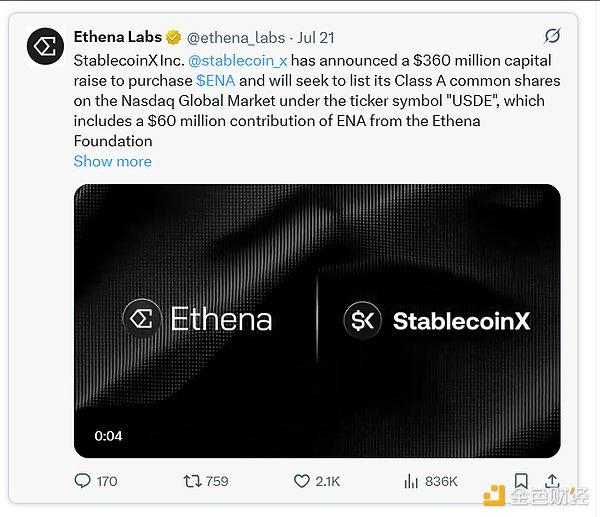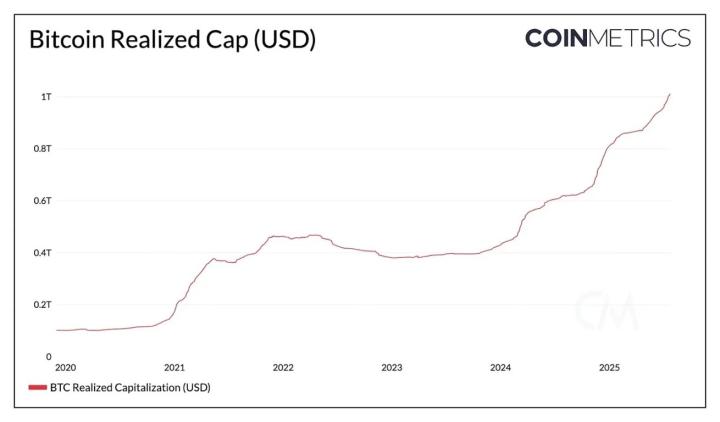Original Title: Hivemind: Ethena Founder, the GENIUS Act & Overvalued L1s
Original Author: Empire
Original Translation: Plain Blockchain
Recently, Ethena's (ENA) USDe stablecoin has become incredibly popular, with its market value skyrocketing from $140 million to $7.2 billion in a year, an increase of over 50 times.After the passage of the GENIUS Act, Ethena Labs quickly collaborated with the US federal crypto bank Anchorage Digital to launch the first GENIUS-compliant, federally regulated stablecoin USDtb, bringing a compliant stablecoin to US retail investors.At the same time, they launched StableCoinX, raised $360 million, plan to list on Nasdaq, and initiated a $260 million buyback program, creating a market frenzy.
Recently, Ethena founder Guy Young was interviewed by Hive Mind host Jose Madu, revealing the reasons behind Ethena's rapid rise in the stablecoin track and his views on the current market landscape.
Below are selected podcast excerpts:
Q1: Guy, you released a major announcement about USDe assets this week, entering the Treasury company domain. Can you share some background and why this is important?
Guy Young: Of course. We started preparing this project in December or January this year. At that time, the market was not as hot as it is now, with similar projects emerging almost daily. Seeing Circle's performance in the public market, we realized that the traditional market's demand for such themes far exceeds supply, and a large amount of capital wants to invest in it, which was an interesting opportunity for us.
From a macro perspective, over the past 18 months, I have been concerned about the capital flow in Altcoins in cryptocurrencies. The peak total market value of Altcoins in 2021 and 2024 is almost the same, slightly below $1.2 trillion. This is a strong signal to me, indicating that the global willingness to invest in these tokens, 99% of which are bubbles, is limited. The industry needs to mature and must attract equity market investors who handle large-scale funds to break through the $1.2 trillion market value.
We focus not on short-term trading of highly premium assets, but on opening a broader investor base. Even providing token access at 1x net asset value is stronger than being completely unable to enter these markets. This is an interesting match: traditional markets have strong demand for such themes, while crypto markets face capital flow issues, and our solution can solve these problems.
Q2: The USDe assets are exciting. When will trading start? How much funding was raised in total? Can you share more details? Ethena Labs tweeted that this is the project with the highest cash-to-asset market value ratio. Can you elaborate on this?
Guy Young: The total project scale is about $360 million, of which $260 million is cash. Our cash proportion is far higher than other similar projects because many projects are just tools for exiting liquidity, with investors hoping to sell on the open market after entering tokens. Our goal is to introduce new cash and solve capital flow problems. Ethena's raised funds account for about 8% of the circulating market value and will be used to buy tokens on the open market. The second-ranked Hype accounts for less than 2%. This is very prominent in the market. Relative to the underlying asset scale, our project is large, and the raised cash will have a significant reflective effect on the token.
[The translation continues in the same manner for the rest of the text, maintaining the specified translations for specific terms.]
Many hedge funds are investing in Ethena because USDe is not entirely used for staking (sUSDe). When USDe is used as currency in AMM or order books, the staking rate does not reach 100%, so Ethena's yield is always higher than capturing the basis spread independently. Although the basis spread may compress over time, we hope institutional capital flows in through Ethena, as it is a more efficient channel. This is one of our investment logics. Some criticize that the basis spread has dropped from 60% when we launched, but this is a natural phenomenon. Ethena continues to grow by reducing the capital cost in the crypto market to a reasonable rate in traditional finance (such as 10-12%), rather than 20-30%.
Q6: People usually focus on high financing rates for certain coins, butEna has lowered these rates, which might mask the scale or speculative nature of long positions. What are your thoughts on this?
Guy Young: Indeed. The market was more overheated before Ethena, especially for BTC and ETHena.. A good way to observe this is through Hyperliquid's financing rates. Currently. Currently, Hyperliquididquid rate is around 25%, while Binance is 11%. There are two reasons: first, Hyperliquid's retail capital flow is more,alized has more investors; second, Hyperliquid has no portfolio margin, cannot fully collateralize a $100 short perpetual contract $BTC.
Therefore, its financing rate needs to be adjusted to compare with CeFi. Ethena has not yet operated on Hyperliquid, so Hyperliquid reflects the true retail capital flow without institutional capital and Ethena's influence influence, making it an ideal reference point for judging market's real heat.
Q7: Recently, a long-awaited event in the crypto field occurred - the Genius Act was passed, the first federal law targeting targeting stablecoins. You announced a partnership with Anchorage, which seems to make you the first stablecoin compliant with the genius you about Genius your thoughts on it the details and significance of this collaboration?
Guy Young: We are transforming our issuance structure from an offshore BVI entity to direct isof USDtb by Anchorage. Anchorage is the only federally regulated bank handling cryptocurrencies, and they will launch a suite of products products, similar to providing "Genius services" for different issuers to meet compliance requirements strategy is dual-track: span partnership with Anchorage,SDwill comply with the And can be used usused in any US scenario allowing payment stablecoins;cowhile USDe will exist in offshore DeFi markets, not within the regulated financial system.<>:'m the stablecoin market now, It's very hot, and everyone is discussing them. Every big company seems to have its own stablecoin strategy, and and there are many infrastructure startups, like Tether chain or other things being built. What are your thoughts? You should have deep insights into the market. What's the most interesting thing in the stablin theablestablecmarketecoin? What's overvalued? What's undervalued?
<><9previously discussedablecoins, and if $3.5 trillion funds become liquid stableoin especially flowing into the crypto market, some funds might flow to Bitcoin, which is very exciting. The crypto market has been well recently, with the ETH Bratio above 0.03, outperforming BTC. Solana is also performing well's. do this? Will the market continue to rise? and at what stage of the cycle are we??<>Young span Long-term, I remain very bearish on ETH and other Layer 1 (L1), believing they most overvalued financial assets in history. In the short term,, ETH's narrative has, longer competing with Solana for chain activity, but positioning itself as a tool to attract traditional finance funds, competing with BTC.
But be wary of signs of new tool slowdown, which, could a turning point.<><10: Regarding,e has reached $6.8 billion. How much can the market support? How much? can the perpetual futures market support?<>Guy Young>: The market potential is huge huge. Open interest is around $110-120 billion, with rates 15-20%. three major cash flow sources in crypto are binance equity, Tether equity, and futures market basis trading. Ethoccupies 6-10%-derivatives market, I believe it should reach 20-%, which is $20-300 billion billion.






